The ongoing stay at home lockdown in the United Kingdom provided the excuse for more time in my workshop. It was the perfect opportunity to build a small cameo model of the monorail designed by Thomas H. Wright for the American Magnesium Company. Readers may recall that I described this monorail, with drawings, in the 2008 January/February and March/April issues of the GAZETTE.
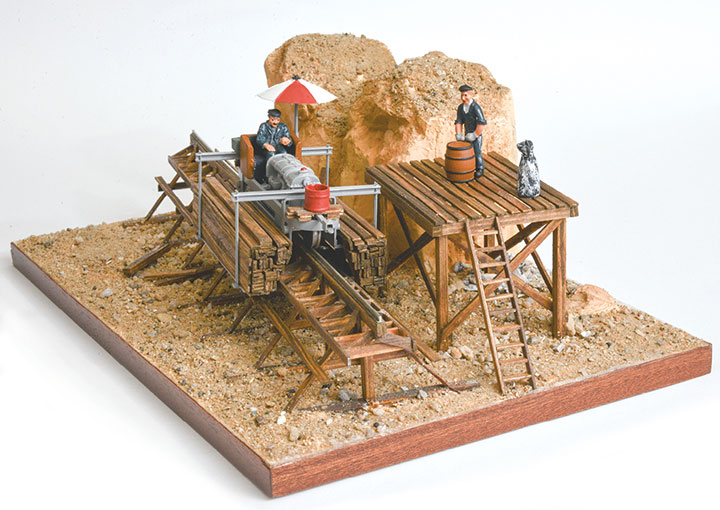
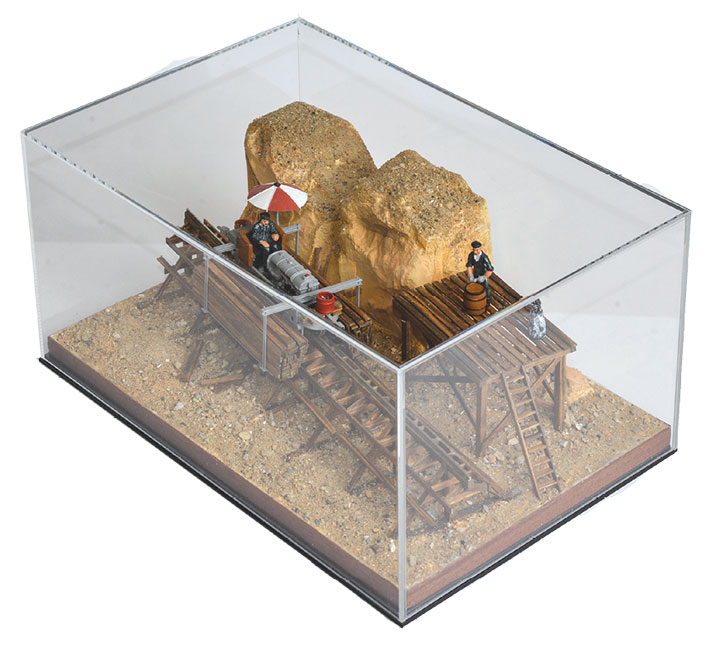
In particular I wanted to capture in miniature the one intermediate station on this twenty-eight-mile-long line that ran from Trona, California, where it connected with the standard gauge Trona Railway, and the American Magnesium mine. To call this a station at Layton Spring in the Layton Canyon is a misnomer, in reality it was no more than a raised platform with a ladder to ground level, and possibly a ramp at the rear, although this is difficult to determine precisely from the one photo I have found.

The scale for my model was determined by a white metal kit I had purchased some years ago of a Fordson type “F” Tractor. This model was to 7mm scale, just slightly bigger than ¼-inch scale. The engine was perfect for my model, but prevented me from using ¼-inch scale ready machined wood.
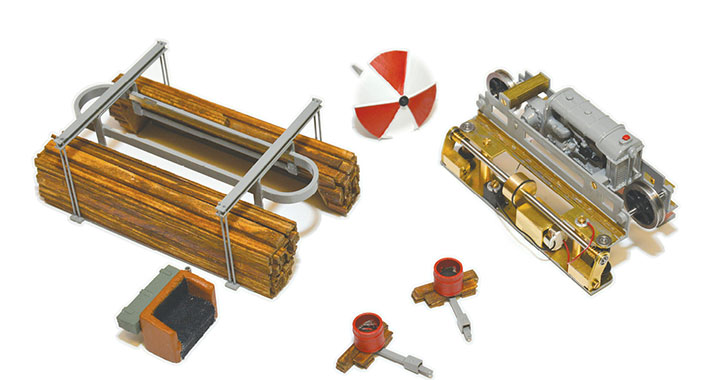
Given the small size of my diorama, just 8- x 12-inches, it would have been tempting to make a static model, but having built model monorails before, the enjoyable challenge is how to make it operate. This was a double challenge in this case because not only did the model have the usual issue of how to arrange a hidden drive, but the original track was of all wood construction, except for the upper main rail. How to get a return electric supply?
My solution to the first problem has been to drive the locomotive via the balancing wheels on one side. “O” ring tires have been added to these tiny wheels which provide a surprisingly solid grip on the wooden side rails that balance the locomotive. The electric supply issue was solved by adhering a small 1/16- x 1/16-inch brass angle to the lower edge of the opposite wooden balancing rail. This is not visible from the front of the model and surprisingly not that apparent from the rear. Phosphor bronze wipers soldered to a copper clad Paxolin plate on the locomotive press against this brass angle and provide the return electric feed. A switch and batteries are housed in the rock formation.
There is little room in the panniers of the locomotive for the motor and gears. I used an 8mm diameter motor sold in the UK primarily for use with 2mm and 3mm scale models. A pulley drive with flywheel, layshaft and worms and wheels gives a ratio of around 1:70, and a resulting scale speed of about one and a half miles an hour. It thus takes about ten seconds to travel across the miniature track. In the early 1920s when this line operated, only one return journey was possible each day. Whilst faster on the flat of Searles Lake near Trona, the speed was typically not much above walking pace in the mountains of Layton Canyon and Wingate Pass, and thus this speed is not out of place at this “station.”
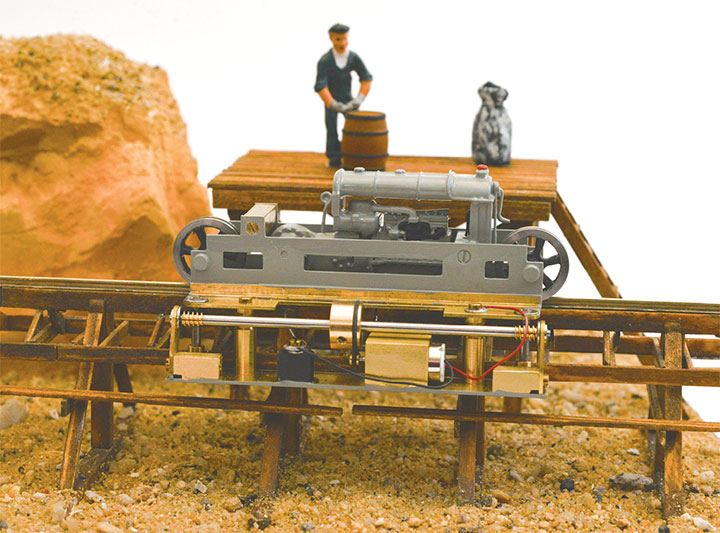
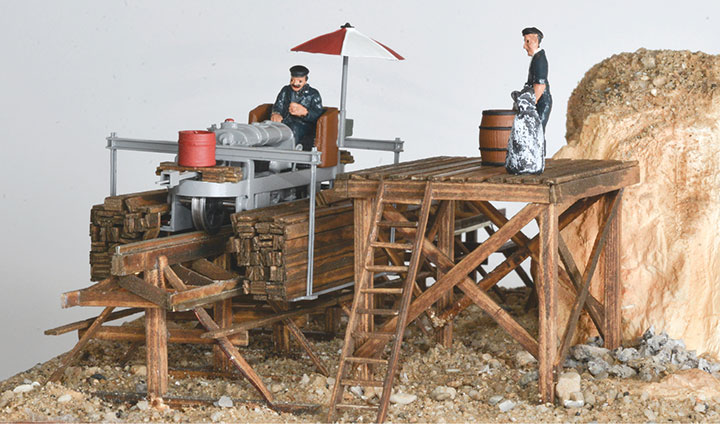
The wood for the track was cut from white wood from my local builder’s merchant. It was sawn into thin planks on a large circular saw and then stripped down to scale model sizes on a homemade small circular saw. It was intentionally left rough to capture the feel of the original line. The positioning of the main rail and side rails is critical, but all else has character!

The scenery at Layton Spring was barren rock with the track and platform tightly squeezed between rocks. I must give full credit to the late Paul Scoles whose articles in the Gazette over many years provided the incentive and methods for my attempt at capturing this atmosphere.
For Further Reading:
Monorails of the 19th Century
by Adrian S. Garner
Monorails of the Early 20th Century
by Adrian S. Garner
The Epsom Salts Monorail
by Alexander K. Rogers (Maturango Museum Store)
The American Magnesium
Company Monorail
by Adrian Garner, Narrow Gauge & Industrial Railway Modelling Review
No. 126 and 127